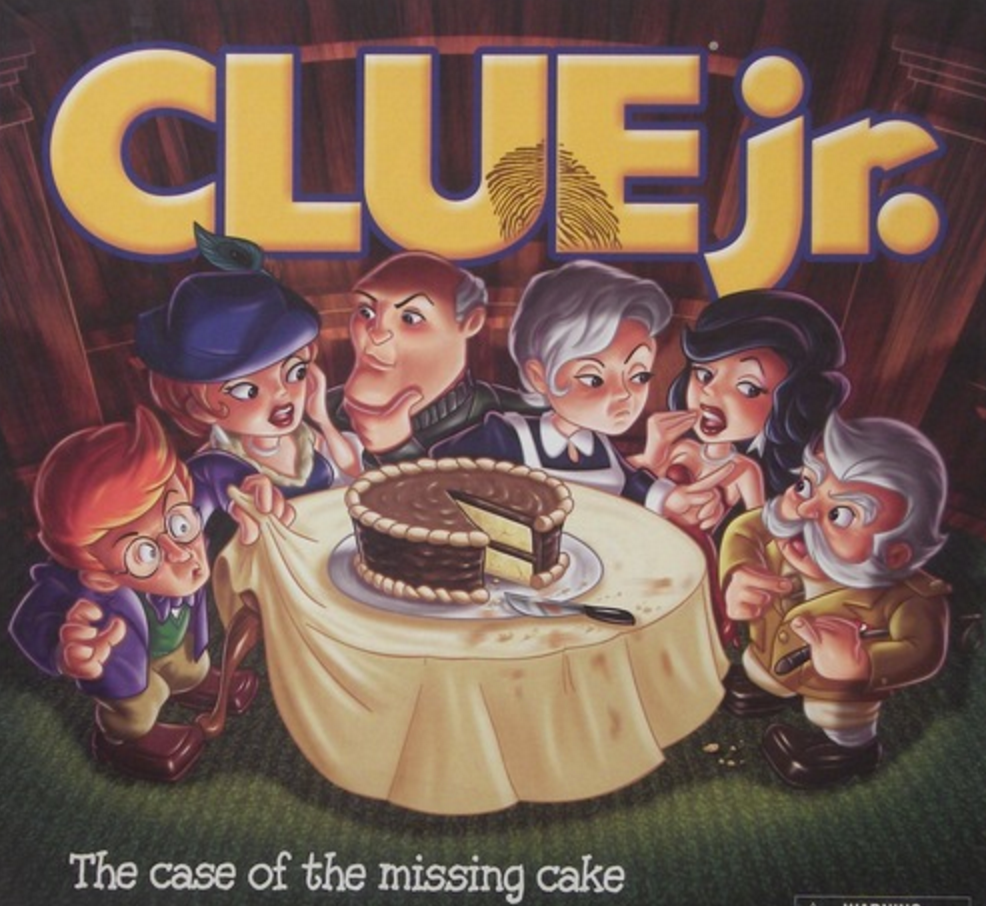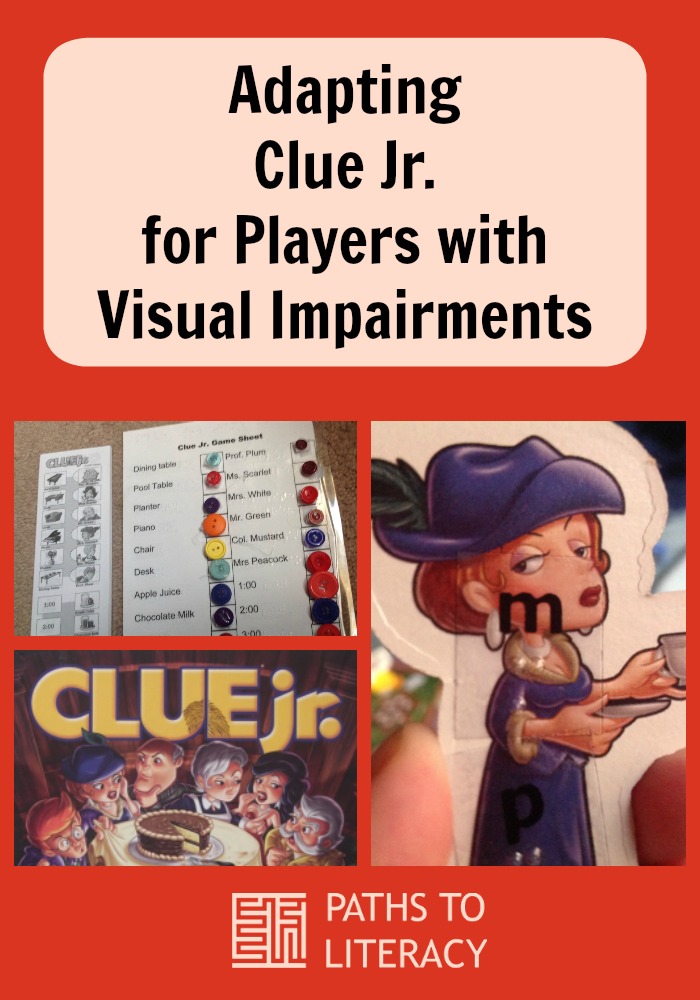Adapting Clue Jr. for Children with Vision Impairments
Submitted by Katie Rae on Jul 09, 2017

I have adapted another game for children with vision impairments: Clue Jr., The Case of the Missing Cake. This game teaches problem solving, deductive reasoning, and critical thinking.
Materials:
Procedure:
- Using Excel, I created a large print game sheet to record game clues. Each sheet was laminated for durablility. If a child has issues with glare, make sure sources of glare are reduced. Each page also has braille. Download the game sheet.
- Put Velcro on the game sheet and the markers with hot glue or other adhesive.
- Label the board: each room has a number (1-9), and each character starting place has a unique tactile shape. Tactile arrows and hot glue mark the different paths. Velcro on the board helps the pieces stay where they are.
- Each room has a piece of furniture in it. On the pieces are room numbers so players know where each item is placed.
- Yellow pieces have a braille letter on the bottom for the drink taken with the cake. On the top is the letter "y" so it is distinguished from the white pieces.
- White pieces have a braille "w" on them, as well as the time when the cake was eaten.
- Character and furniture pieces have both a room number, the first letter of the item, and the charcter's unique symbol.
- Two pieces are left without anything on them. These are put in the center of the board.
Variations:
- Play with dual learners.
- Use high contrast game sheets with students with low vision.
- If a child has issues with glare, make sure sources of glare are reduced.


Comments
Adapting materials for CVI
Adapting materials for CVI